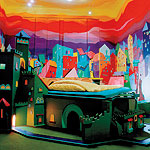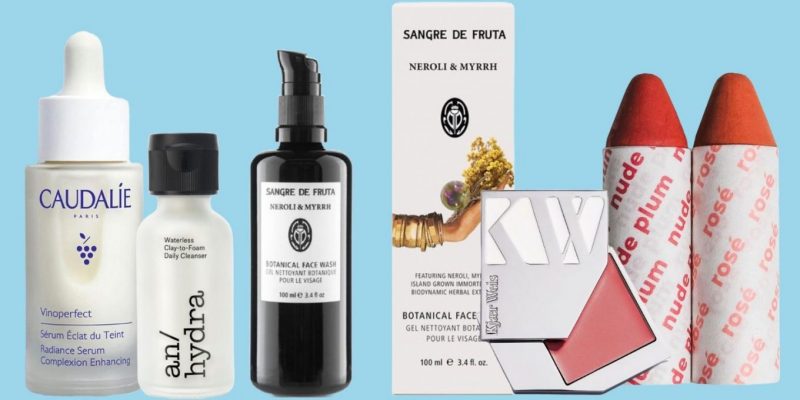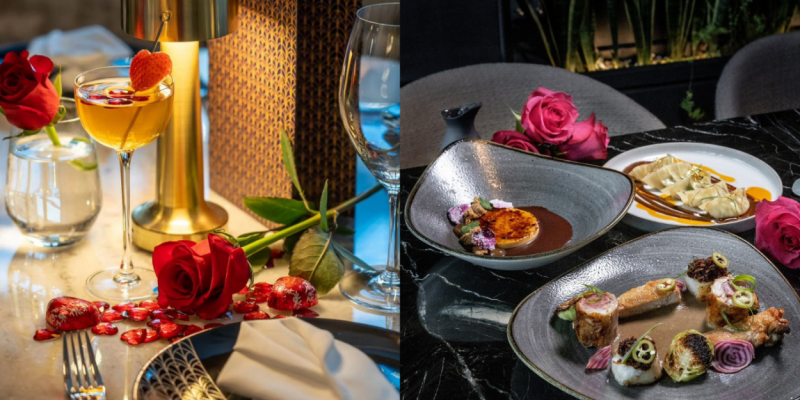Culture
Art House: Hotels that are truly pieces of art
Hotels as performance art - for the traveller who wants more than just a fluffy bathrobe.
by : Clara Young- Mar 19th, 2008

You could play it safe and book yourself at the Hyatt, or you could pay $101 a night and stay in a “vision machine.” The vision depends on which room you check into at the Propeller Island City Lodge in Berlin. And, no, breakfast is not included.
The morbidly inclined would love “Gruft,” which features coffin beds – singles, of course. Those who have seen The Silence of the Lambs once too often will be naturally attracted to the “Two Lions” suite, furnished with beds in two ornate cages elevated 1 1⁄2 metres off the carpeted floor. The borderline psychopath might ensconce himself in the green leather upholstery of “Padded Cell,” while the certifiably unstable might be biased toward “Flying Bed,” with its sharply slanted floor. Designed and built by artist/ musician Lars Stroschen, Propeller Island – the name is taken from a Jules Verne novel – takes the interior-decorating appeal of art far beyond the tasteful confines of lobby walls into the sometimes-inhospitable realm of “living in a work of art.” It is part of a newly emerging category of one-star (okay, occasionally two-star) hotels that are ditching comfort and convenience for the experiential.
What does it feel like to go to sleep with the Eiffel Tower sparkling through your window? Or wake up in a glowing, all-orange room? Hotels like the Everland – a groovy ’60s-vibe crash pad currently bolted onto the roof of the Palais de Tokyo contemporary arts centre in Paris – and Propeller Island City Lodge fulfill those fantasies; these are art installations that double as B&Bs. Etienne Boulanger’s Single Room Hotel, located on a scruffy street corner in Berlin’s Skulpturenpark, is constructed out of scaffolding and giant billboards.
Click here to read more!Guests climb up a short ladder on the sidewalk and through a door into a basic room with a bath that looks like it’s right out of Travelodge.
“The people who come on our organized trips don’t want something that’s anonymous,” says Eric Mézan, who founded the Paris-based art-consulting agency Art Process and its spinoff, Art Travel Desk, which puts together customized art tours all over the world. “They want something that’s tailor-made for them. They want to experience travel differently.”
Art Travel Desk will book its clients at André Balazs’ Miami Beach spa hotel, The Standard, for example, while they make the rounds at Art Basel Miami Beach and beyond. But if Mézan thinks his clients are on a quest for something a little more off-the-wall, he’ll go for something like the Salon Parisien.
Here, in video artist Frédérique Lecerf’s spacious studio apartment in Paris’ Butte Aux Cailles neighbourhood, you’re not living in a work of art; you’re living where artists work.
Friends come by to pick up or drop off work. Someone may come by to paint a mural on the wall outside. The house itself is an informal exhibition space with a rotating selection of videos, paintings and other art installations showcased in every room. But all this is mere art as spectator sport. To really get into the thick of the creative process, fork out 50 Euros for a dinner party/performance piece and you may find yourself in Lecerf’s rococo-style dining room, being videotaped spooning gold gazpacho into your mouth, cutting into a gilded pork roast or stuffing an 18-karat baked apple into your mouth. “It’s like eating a still life,” says Lecerf, who specializes in lavish gold-leaf meals. Lecerf and Olivier Goetz – an art critic who moonlights as a chef – concoct monochromatic meals in not-always-appetizing hues, including pitch-black dinners, with starters such as oysters and winkles with black truffles, and all-turquoise feasts. As Lecerf explains, “People who want a direct and immediate connection with an artists’ community like to come here.”
There is a similar philosophy behind Michèle Mariaud’s two-floor SoHo artists’ loft in Manhattan. A Quebecer who quit advertising four years ago to become an art dealer and consultant, Mariaud and her photographer husband decided to bring in a little extra income by opening their house to arts-oriented guests – many of whom book through Mézan’s Art Travel Desk.
Click here to read more about art hotels.
Like the Salon Parisien, Mariaud’s loft is artsy and convivial. “This isn’t a place you should come to if you’re looking for privacy,” she says. “I’ve come home and found guests I hadn’t met yet sitting on the couch, playing banjo for my daughter. People who are staying here meet one another. A lot of times, we end up having dinner parties together.”
Rather than living in a work of art or living where artists work, Mariaud’s loft is about living with art, which just happens to be the name of the hotel. “I wanted to make art collecting less intimidating,” says Mariaud. “People have preconceived notions about it: that you have to be educated, that art has to be precious. I wanted to create a space that is warm, unpretentious and lived in. I put art everywhere. I want people to feel comfortable having art around them.”
Big hotel chains are also beginning to see the cosmetic appeal of contemporary art. Le Méridien recently hired curator Jerome Sans – formerly of the Palais de Tokyo in Paris – to make its hotels art-compliant. Sans’ job is to create a global creative cartel made up of 100 individuals – which the hotel has dubbed “LM100” – that will include international artists to design the hotel’s key cards and musicians to create distinctive “sound environments” in its elevators and lobbies. Visual artist and writer Sam Samore has written a collection of bedtime fairy tales that are to Le Méridien’s bedside tables what Gideon Bibles are to others.
“What Le Méridien wants to do is almost pedagogical,” explains Sans. “We want to bring new, original experiences to people who are out of touch with creative things and don’t have the time or knowledge to seek them out. My role is to bring in people who will create unforgettable experiences that transform the banal into something that will transport our guests and change their lives.”
A stay at Le Méridien might not be an encounter with the sublime. But from a marketing point of view, contemporary art may become what design was to the hotel industry in the ’80s. Park Plaza Hotels has been dabbling in art strategies for the past five years with “art’otels,” a small chain of European boutique hotels, each of which showcases an artist. The art’otel Budapest, for example, shows some 600 pieces by painter Donald Sultan, who also had an influence on the design of the hotel.
These hotels are banking on art to draw in the frequent flyers – the young, hip and cool who have loads of disposable income. This entails that, in addition to the armchairs designed by Christian Liaigre, there are avant-garde videos looping on the flat screen television over the headboard and bird sounds piped into the bathroom, and there’s a Jeff Wall photograph on the wall in the conference room.
Newsletter
Join our mailing list for the latest and biggest in fashion trends, beauty, culture and celebrity.
Read Next

Beauty
10 Luxe Household Scents That Smell Amazing
Including Diptyque dishwashing liquid, Canadian-made room sprays and so much more.
by : Katherine Lalancette- Apr 17th, 2024

Beauty
10 Sustainable Beauty Brands to Know About This Earth Month
Refillable, Waterless and sustainable, oh my!
by : Allie Turner- Apr 17th, 2024

Fashion
This Jewellery Brand Has a Whole New Look And It’s Everything
Here are the seven pieces we’re coveting.
by : ELLE Canada- Apr 10th, 2024




